Asimina triloba
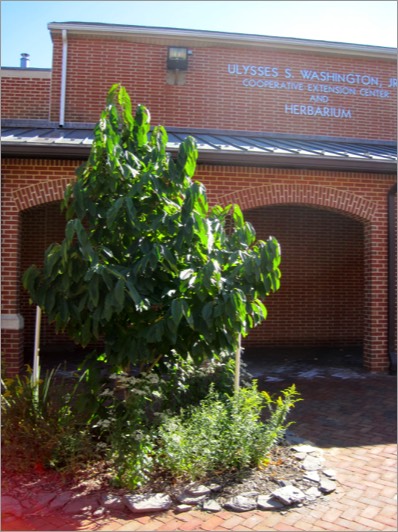
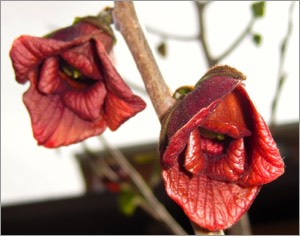
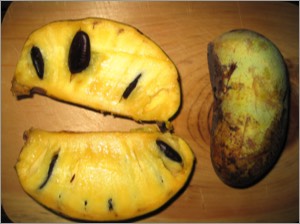
Asimina triloba
PAWPAW
Annonaceae
E. North America
Location: map coordinates T-11 (north side of Washington Building, outside entrance to Claude E. Phillips Herbarium),
N 39°11'7'' W 75°32'45''
Planting history: planted 2006 (by Dr. A. Tucker). Source: J. E. Miller Nurseries, Inc., Canandaigua, NY. The labeled tree is cultivar ‘Sunflower’, and the smaller one immediately to the east of it is ‘Wells’
Description:
Native species, State Rank S5 (very common in Delaware)
PAWPAW
Annonaceae
E. North America
Location: map coordinates T-11 (north side of Washington Building, outside entrance to Claude E. Phillips Herbarium),
N 39°11'7'' W 75°32'45''
Planting history: planted 2006 (by Dr. A. Tucker). Source: J. E. Miller Nurseries, Inc., Canandaigua, NY. The labeled tree is cultivar ‘Sunflower’, and the smaller one immediately to the east of it is ‘Wells’
Description:
- deciduous shrub or small tree
- etymology: Asimina from French colonist’s asiminier, from native American Indian name assimin; triloba = 3-lobed (calyx and corolla)
- leaves large and drooping; serve as the sole food of the zebra swallowtail butterfly caterpillar
- flowers purplish-brown, with 2 circles of petals; open mid-April (in DE); unpleasant odor and color attracts fly pollinators
- fruits up to 6” long, yellowish. The largest tree fruit native to North America (therefore theorized to have evolved for dispersal by now-extinct large animals). Edible with a banana-mango-pineapple flavor
- it may be important to plant 2 genetically-different trees to allow cross-pollination, to produce fruit
- height usually to 15’-20’ tall (sometimes 30’); can grow clonally to form dense stands in forest understory
- contains chemicals [acetogenins] toxic to many insects
- the Annonaceae, the custard–apple family, is mostly tropical; Asimina is the only genus in the family not confined to the tropics and subtropics. This family also includes custard apple, cherimoya, and soursop
- popularized in traditional children’s song “pickin’ up pawpaws, put ‘em in your pocket, way down yonder in the pawpaw patch”
- efforts underway to develop pawpaw as a commercial crop, but fruit over-ripens quickly; hardy to ca zone 5
- native to central and southern US, including Delaware; rich, moist soils
Native species, State Rank S5 (very common in Delaware)
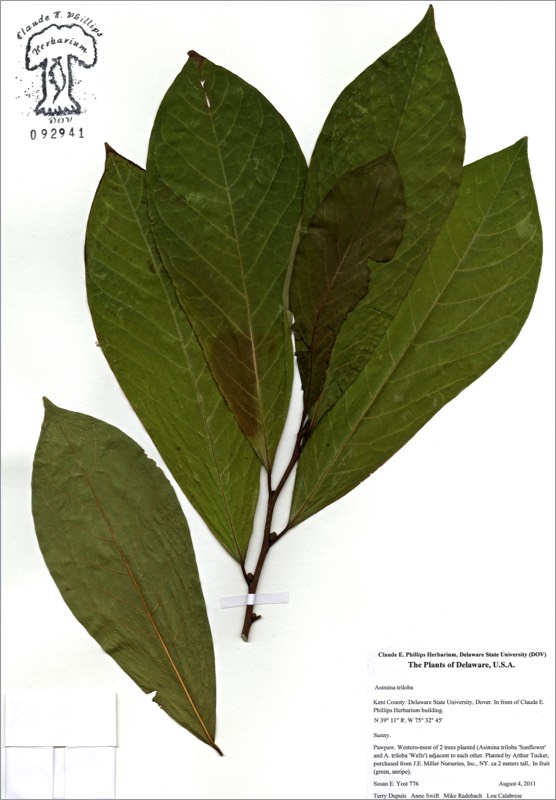
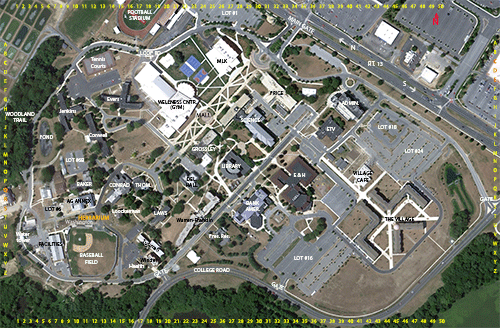
HIT REFRESH TO START LOCATION GRAPHIC